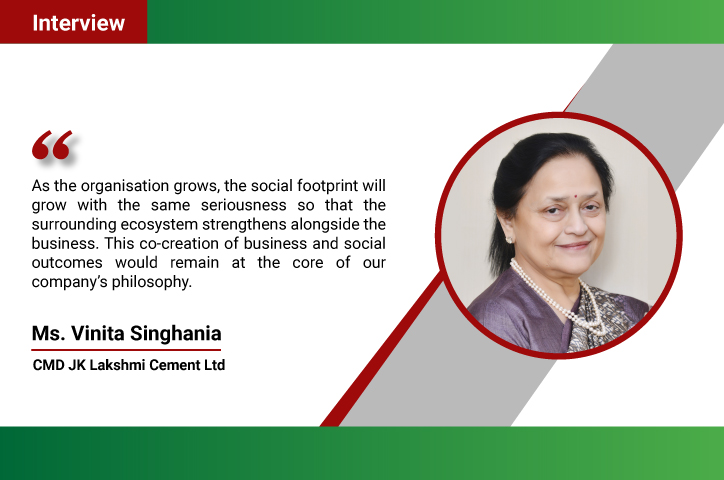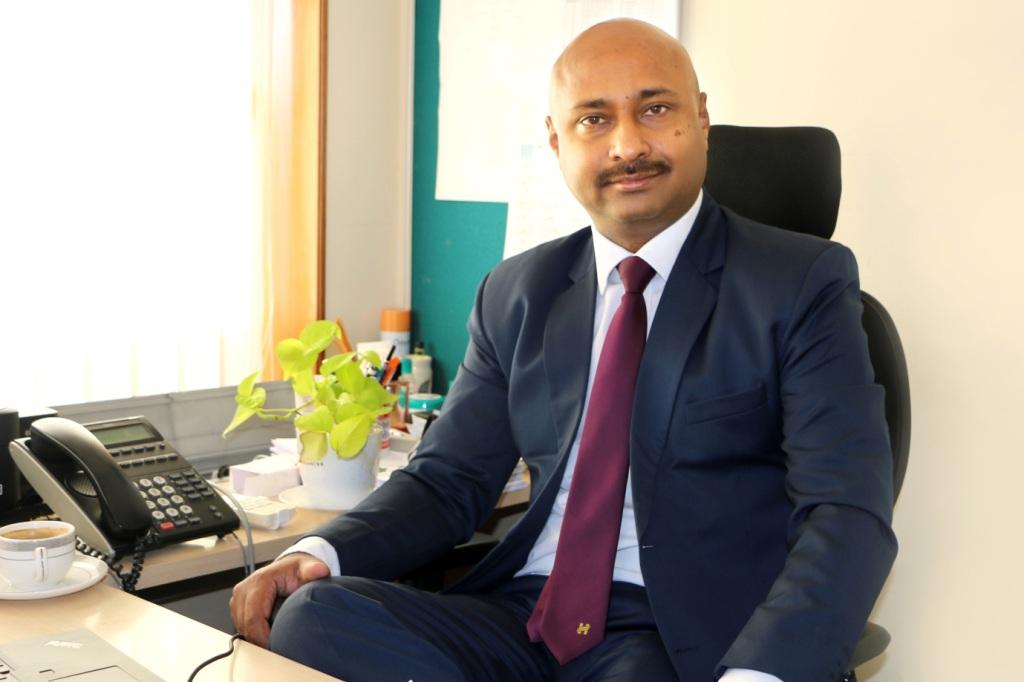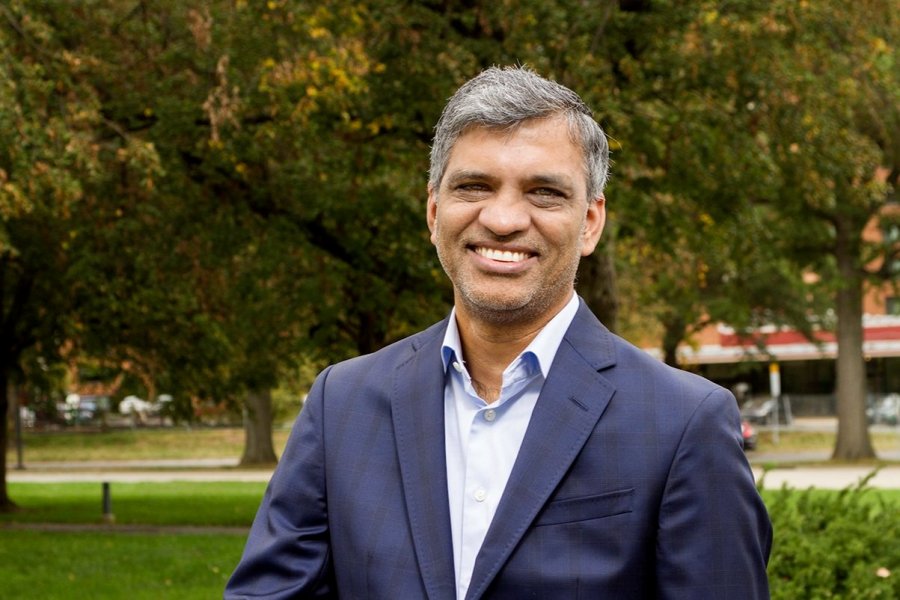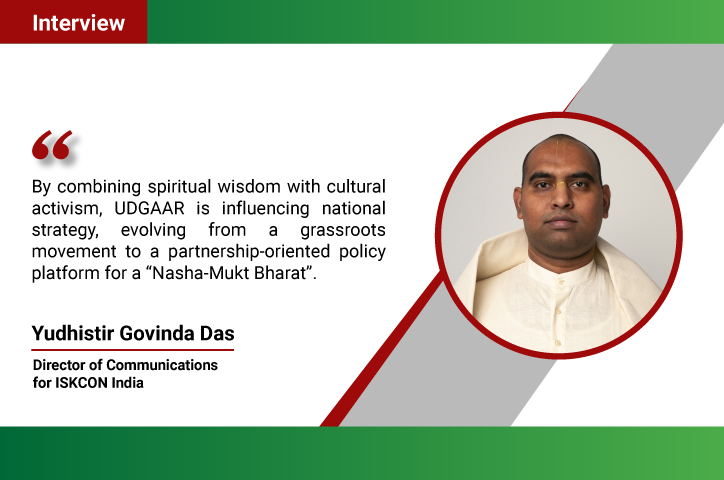Waste production in India is a significant environmental challenge fuelled by rapid urbanization, industrialization, and population growth. The country generates vast amounts of waste daily, encompassing municipal solid waste, electronic waste, and hazardous waste. Unfortunately, waste management infrastructure often struggles to keep pace, leading to inadequate disposal, illegal dumping, and uncontrolled waste burning. This contributes to air and water pollution, soil contamination, and adverse health effects for communities residing near waste sites. The need for comprehensive waste management policies, increased awareness, and sustainable practices is crucial to address India's mounting waste production and mitigate its far-reaching environmental and public health consequences.
The Vrikshit Foundation, founded by Shankar Singh, envisions transforming urban areas into clean and sustainable spaces. In this interview with TheCSRUniverse, Shankar talks about their mission to eradicate the idea of city areas as dumping sites and instead provide a clean, green environment for everyone. Through innovative waste management, recycling, and community engagement, they aim to create a better future for cities and their residents.
Scroll down to read the full interview:
Q. What is the main vision behind the inception and establishment of Vrikshit Foundation by Shankar Singh?
A) The Vrikshit Foundation, founded by Shankar Singh, envisions transforming urban areas into clean and sustainable spaces. Their mission is to eradicate the idea of city areas as dumping sites and instead provide a clean, green environment for everyone. Through innovative waste management, recycling, and community engagement, they aim to create a better future for cities and their residents.
Q. How has Vrikshit Foundation positively impacted individuals through its initiatives, and could you provide examples of notable accomplishments since its inception?
A.Vrikshit Foundation has made a significant positive impact on individuals through its dedicated initiatives. Since its inception, the foundation has achieved notable accomplishments that have transformed communities and the environment. Some of these accomplishments include:
1. Volunteer Workforce: Vrikshit Foundation has mobilized a workforce of over8000 volunteers who are passionate about the environment. These volunteers actively engage in clean-up drives, plantation initiatives, and other projects aimed at improving the surroundings.
2. Diverse Initiatives: The foundation has successfully transformed various areas from dump-yards into thriving spaces. These transformations include converting dump-yards into skill centers, organizing English learning classes, and even creating mini forests. This diverse range of initiatives addresses multiple aspects of community development.
3. Positive Impact: The efforts of Vrikshit Foundation have directly impacted around 500,000 people who were previously living in unsanitary conditions. By turning trash-laden spots into clean and vibrant areas, the foundation has significantly improved the quality of life for these individuals.
4. Recognition and Awards: The foundation's outstanding work has been acknowledged by three Chief Ministers, highlighting the impact and significance of their initiatives. They have also been recognized as a brand ambassador by the Municipal Corporation of Delhi (MCD).
5. Playground Transformation: One of the noteworthy accomplishments is the transformation of dump-yards into playgrounds. These areas, once avoided due to their unsightly nature, have been turned into safe and enjoyable spaces for children to play, contributing to their overall well-being.
6. Wide Outreach: Vrikshit Foundation's impact extends across 32 cities where they collaborate with government bodies to implement their initiatives. This wide outreach demonstrates the foundation's commitment to creating positive change on a larger scale.
Q. What role do volunteers play in the activities of Vrikshit Foundation?
A. Volunteers are the backbone of Vrikshit Foundation, playing a pivotal role in various activities and initiatives. Their dedication and enthusiasm drive the foundation’s mission forward. Volunteers contribute through a range of activities, including:
1. Cleanup Activities: Volunteers actively participate in clean-updrives, helping to transform trash-filled areas into clean and appealing spaces. Their hands-on efforts make a tangible difference in improving the environment.
2. Wall Painting: Volunteers bring color and creativity to urban spaces by engaging in wall painting projects. These vibrant artworks not only beautify surroundings but also convey messages related to environmental awareness.
3. Waste to Wonder: Volunteers contribute to innovative projects like "Waste to Wonder," where they collaborate to find creative solutions for repurposing waste materials into useful and aesthetic objects. This promotes resourcefulness and sustainability.
4. Awareness Campaigns: Volunteers take the message of environmental consciousness directly to communities through door-to-door campaigns. Their efforts in spreading awareness about waste management and sustainable practices have a significant impact.
5. Community Engagement: Volunteers serve as the direct link between the foundation and the communities it serves. Their active involvement fosters a sense of ownership and responsibility among residents for maintaining clean and green environments.
6. Supporting Operations: Volunteers assist in the logistical aspects of events, campaigns, and initiatives. Their dedication helps ensure the smooth execution of various activities.
7. Amplifying Impact: By contributing their time, energy, and skills, volunteers amplify the impact of Vrikshit Foundation's work. Their collective efforts enable the foundation to reach more areas and make a broader positive influence.
In essence, volunteers are at the heart of Vrikshit Foundation's activities. Their commitment to hands-on work, raising awareness, and engaging with communities elevates the foundation's mission of creating sustainable urban environments.
Q. How has Vrikshit Foundation collaborated with local communities, educational institutions and other social sector stakeholders to ensure the advocacy and attainment of sustainable development? How can such collaborative mechanisms expedite the efforts of the organisation?
A. Vrikshit Foundation has fostered impactful collaborations with local communities, educational institutions, and other social sector stakeholders to promote sustainable development. These collaborative mechanisms not only advocate for positive change but also expedite the organization's efforts in several ways:
1. Community Empowerment: By collaborating with local communities, the foundation ensures that the people who reside in the areas to be transformed are active participants in the process. This empowerment builds a sense of ownership and responsibility among community members, enhancing the sustainability of the initiatives.
2. Awareness and Education: Partnerships with educational institutions allow Vrikshit Foundation to reach a wider audience, particularly the younger generation. Schools and colleges become platforms for spreading awareness and educating students about environmental issues and sustainable practices.
3. Youth Engagement: The foundation's engagement with school and college groups, along with a predominantly young volunteer base, creates a dynamic force for change. Young volunteers are often enthusiastic and open to innovative ideas, which brings fresh perspectives to the organization’s initiatives.
4. Feedback and Continuous Improvement: The foundation's feedback mechanism, coupled with regular contact with local volunteers, ensures that the impact of their efforts is sustained over time. Collaborations with stakeholders help in receiving valuable feedback and insights, contributing to continuous improvement.
5. Leveraging Local Representatives: Involving local representatives like MLAs (Members of Legislative Assembly) and MPs (Members of Parliament) enhances the reach and credibility of the foundation's initiatives. These figures often hold significant influence and help us to amplify the message to a larger scale.
Q. How has Vrikshit Foundation been recognized for its efforts in advocating sustainable development?
A. The Foundation's endeavors to promote a greener future include the strategic planting of trees, which has resulted in the creation of denser forests within urban areas. These living ecosystems not only enhance the aesthetic appeal of cities but also contribute significantly to mitigating the impacts of climate change. The Foundation’s unique approach also extends to using wall paintings and theme-based artwork to raise awareness about environmental conservation, sparking conversations about the importance of preserving our planet for future generations.
Moreover, Vrikshit Foundation's engagement with educational institutions through workshops in schools and colleges plays a pivotal role in nurturing environmental consciousness among students. By imparting knowledge about the adverse effects
of a deteriorating environment in our daily lives, these workshops empower students to become change agents in their communities. The Foundation’s multifaceted efforts have garnered recognition from both local communities and regional authorities, highlighting its remarkable contributions to sustainable development. Recently, we were awarded the City Welfare Award at the City Champions summit organized by Josh Talks and supported by the Omidyar Network India. As Vrikshit Foundation continues its mission, it remains steadfast in its dedication to fostering a harmonious coexistence between humanity and the natural world.
Q. Could you explain the significance of the Miyawaki technique in Vrikshit Foundation’s goals?
A. The Miyawaki technique holds immense significance in the pursuit of Vrikshit Foundation’s goals, particularly in the context of urban reforestation. This innovative approach offers a powerful solution to the challenges posed by limited space in cities. By harnessing the principles of the Miyawaki technique, we are able to densely plant a variety of trees in relatively small areas, resulting in the creation of thriving micro-forests. This is particularly crucial in urban environments where space is at a premium. What makes the Miyawaki technique even more impactful is its cost-effectiveness. Traditional reforestation methods often require significant resources and maintenance, but the Miyawaki technique’s ability to accelerate tree growth and reduce the need for ongoing care makes it an economically viable option. As urbanization continues to shrink available green spaces, the Miyawaki technique emerges as a beacon of hope, enabling us to establish vibrant green pockets throughout the city, contributing to improved air quality, biodiversity, and overall well-being.
Q. What specific strategies does Vrikshit Foundation employ to engage local residents and create lasting impact?
A. Vrikshit Foundation employs a multifaceted approach to effectively engage local residents and foster a lasting impact within the communities it serves. The organization strategically combines various strategies to ensure meaningful involvement and sustained positive change:
1.Community Showcasing and Awareness: Vrikshit Foundation initiates its engagement by showcasing its past work and the tangible impact achieved in other areas. By highlighting successful transformations, the Foundation instils a sense of pride and ownership among local residents. Seeing college groups and volunteers actively participating in clean-up and improvement projects creates a sense of shared responsibility and motivates community members to take part.
2. Empowerment and Skill Building: Beyond showcasing, Vrikshit Foundation actively involves local residents in the transformation process. Through workshops, training sessions, and skill-building activities, community members are equipped with the knowledge and tools needed to contribute effectively. This empowerment not only enhances the impact of the Foundation’s efforts but also enables residents to take charge of their surroundings in the long term.
3. Feedback Mechanism Team: To ensure the sustainability of the impact, Vrikshit Foundation establishes a dedicated Feedback Mechanism Team. This team remains in touch with local residents even after the transformation projects are completed. They monitor and evaluate the ongoing condition of the areas that have been transformed, seeking input from the community about any issues that arise. This ongoingengagement helps identify areas that need further attention and adjustments, ensuring that the positive changes made are maintained over time.
Q. How has Vrikshit Foundation transformed former dumping grounds into useful community spaces?
A. We transformed abandoned dumping grounds into thriving community spaces through strategic collaboration with local representatives like MLAs, MPs, and MCD officials. By obtaining necessary permissions, they clean and revitalize the areas. Crowdfunding and community support provide essential funds, while an extensive volunteer network accelerates the transformation. Donations of materials further aid in creating these spaces. This approach not only beautifies neighbourhoods but also fosters community pride and unity.
Q. Could you please provide insights into how Vrikshit Foundation is currently tackling challenges posed by environmental degradation, including waste-related issues, through its initiatives? Additionally, what are the organization's strategies to address future challenges related to environmental degradation and underprivileged communities?
A. Vrikshit Foundation is dedicated to tackling the multifaceted challenges posed by environmental degradation through its innovative initiatives and projects. One of the major challenges they address is the lack of awareness among citizens about the consequences of environmental issues, particularly air pollution. Many individuals do not act until their own families face serious health issues. This awareness gap makes raising public consciousness a challenging task.
To address this challenge, Vrikshit Foundation employs a multi-pronged approach. They actively engage with local communities through small meetings with Resident Welfare Associations (RWA) and other small associations in Delhi. By showcasing the alarming facts and projecting the potential worsening of conditions over the next decade, the organization strives to shift mindsets and instil a sense of urgency. They emphasize the idea that failing to act now will result in a more difficult situation for future generations, effectively invoking a sense of responsibility.
Additionally, Vrikshit Foundation creatively employs elements of religious significance to raise awareness. For instance, they utilize imagery of Yamraj, the Hindu god of death, along with a message "Ganda kroge to mujsemiloge." This powerful message quickly gains traction and spreads among the population, encouraging people to refrain from improper waste disposal.
In the realm of waste management, the organization has taken proactive steps to address waste-related challenges. Recognizing the prevalent issue of waste segregation being ignored by a majority of the population, VrikshitFoundation partners with Material Recovery Facility (MRF) centers. These collaborations facilitate the effective segregation of the waste collected from various regions. By ensuring that waste is properly sorted and processed, they prevent the reoccurrence of littering in those areas and contribute to maintaining cleaner environments.
Q. What are some of the upcoming initiatives and projects that Vrikshit Foundation plans to undertake?
A. Building upon the success of our current endeavours, we have a range of new projects in the pipeline that align with our mission to uplift communities and promote sustainable development.
Expansion of Skill Development Centers: Following the success of our library and English learning centre self-defence and computer classes, we are planning to establish in underserved areas Majorly spots which are full of garbage. These centers will empower individuals with valuable skills, enhancing their employability and overall quality of life.
Enhanced Lighting Infrastructure: Our upcoming project involves installing street lights in villages to illuminate public spaces. This multifaceted initiative aims to address several issues simultaneously. Increased lighting will discourage littering by making individuals wary of being observed, thereby promoting cleaner environments. Additionally, improved lighting will enhance road safety, benefiting both pedestrians and motorists. Moreover, the heightened visibility will contribute to the safety of women, making public spaces more secure.
Campus Ambassador Programs: To expand our outreach and impact, we’re launching campus ambassador programs in colleges. By engaging enthusiastic young volunteers, we hope to spread our mission, involve more individuals in our projects, and create a ripple effect of positive change in society.
Green Pillars Initiative: Recognizing the importance of combatting air pollution, we're planning to plant trees on available spaces around pillars. This innovative approach not only adds greenery to urban landscapes but also helps in absorbing dust particles and reducing air pollution, thereby contributing to cleaner air for the community.
Historic Wall Paintings: To connect communities with their heritage and promote aesthetic enhancement, we intend to create theme-based wall paintings on the pillars of Delhi. These paintings will depict historical scenes, showcasing the rich cultural heritage of the city and creating visually appealing landmarks for both residents and visitors.













.jpg)




